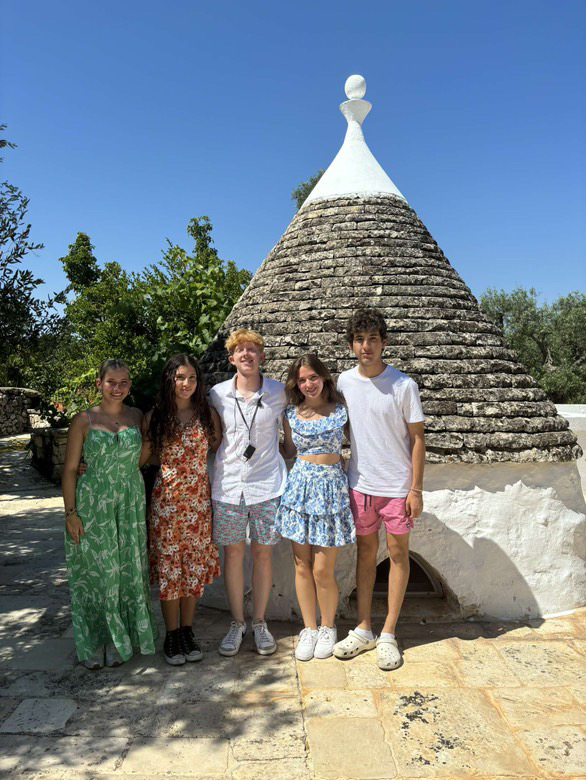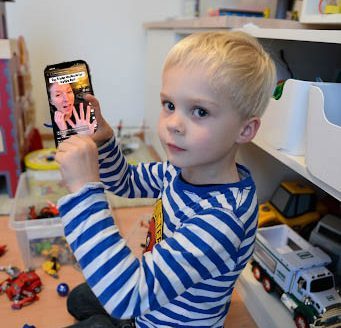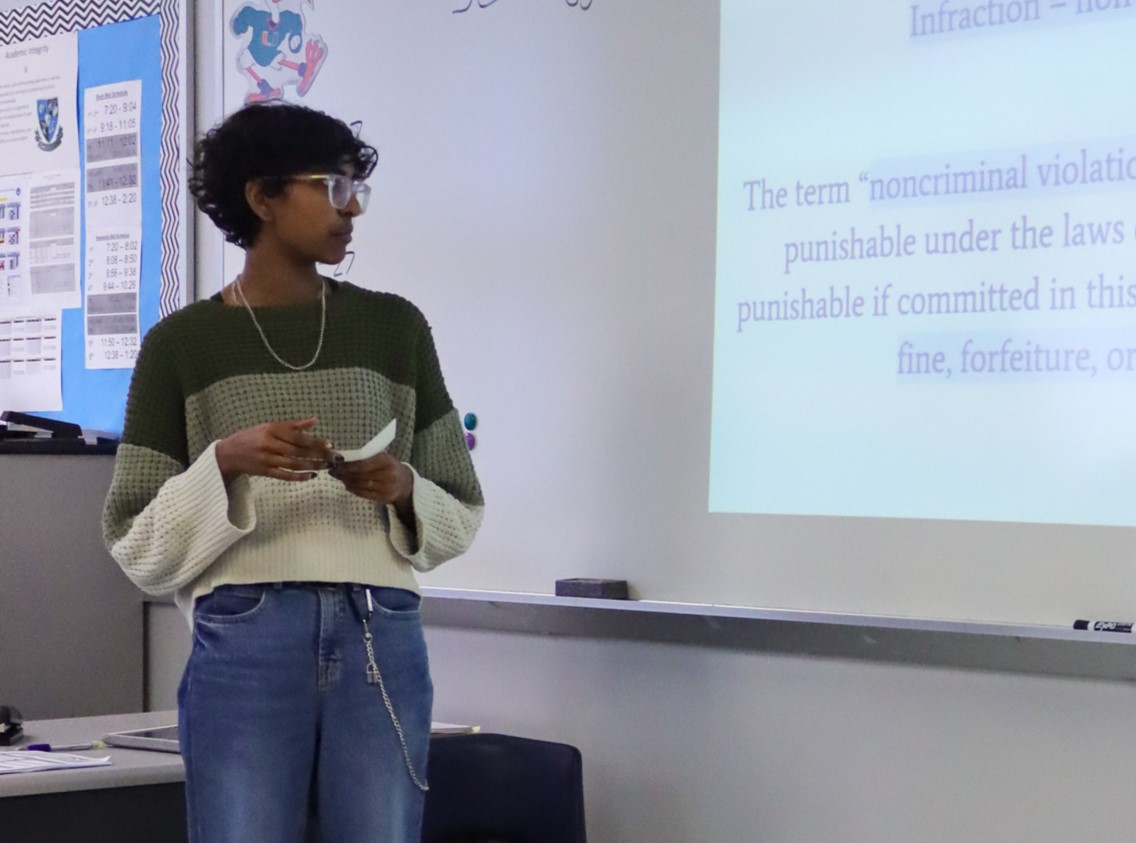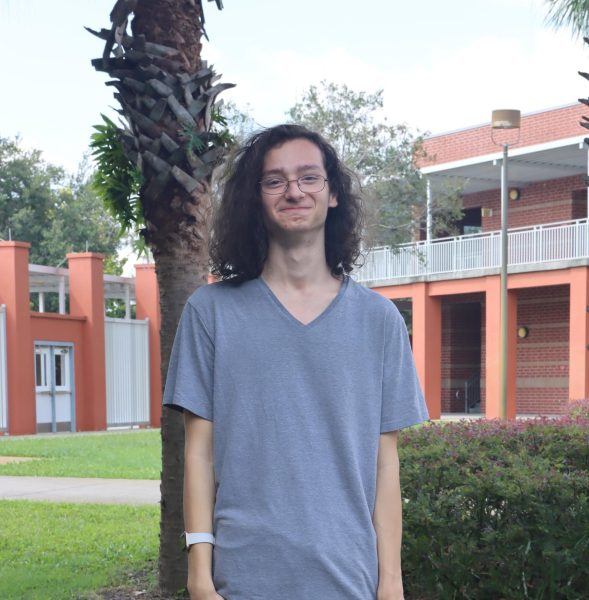Kennedy Space Center, the mud walk, St. Augustine—While field trips are common in elementary and middle school, high school field trips are more of a rarity. A student may view a field trip as a way to escape a classroom atmosphere with their peers. But, to a teacher, a field trip is months of planning, preparation and paperwork.
Field trips are designed to encourage students to utilize what they learned in class in a real-world scenario. For the ASL classes, the annual Busch Gardens field trip allows students to demonstrate their understanding of ASL by going completely “voice-off” for the entire trip, communicating only in sign. Co-host of the trip, ASL teacher Grace Wilken-Yoder is accustomed to the process of planning field trips.
“The planning is kind of tedious, but when you’re there, it’s worth it, because you see all the excitement, and you see how much the students are getting from the experience,” Wilken-Yoder said. “You feel glad that you went through all the paperwork and got all the permission slips and it works out.”
One of the most difficult aspects of planning for a trip is securing transportation. The three most common choices of transport are having students drive themselves, renting school buses or working through a private transport company, such as a charter bus.
“[You’re required] to get quotes from different bus companies,” ASL teacher Grace Wilken-Yoder said. “It does require a lot of research, a lot of getting prices, figuring out how to pay for it.”
Some field trips take students around the nation or even world. These trips require much more planning and a longer review process. Out-of-state field trips can take months to get approved, while field trips out of the country can take up to a year to go through the proper reviewing process.
There are many steps to the process, but for drama teacher Jamal Solomon, organizing is second nature. The planning process is a simple-yet-tedious course of action.
“I was in the military. So for me paperwork [is] natural, so it doesn’t really cause me any extra anxiety or anything like that. It’s just the process. Cross all your T’s and dot all your I’s, then everything is covered. as long as the money’s in place,” Solomon said. “That’s always the biggest issue: the cost of things.”
Traveling to another state or country is a costly affair with some trips costing upwards of thousands of dollars to operate. Needing to organize a bus or plane, a hotel room that can fit all of the attending students and chaperones plus the cost of food all add up to a hefty sum. In order to pay for this, Debate team sponsor Samantha Ollweiler relies on Spirit Night fundraisers to pay for a majority of her regional trips and depend on her club members to cover the rest of the cost.
Ollwelier has taken her debate members on multiple field trips over her four years as sponsor. Needing to learn the processes that go into planning a trip from scratch, she has faced many setbacks.
“The first year when I had students qualify for DC, I had to ask so many questions and bother so many people, because I was new to the district,” Ollwelier said. “Learning [the system] was very difficult because there’s so many different pieces and things you have to make sure you get right for it to be approved and fall within district policy.”
One of the largest trips offered on campus is the Epcot field trip. The Spanish, Chinese and French language classes visit Epcot’s representations of China, Paris and Mexico. French teacher Pamela Lynch, the main organizer for the event, is required to begin planning in September in order to have the trip ready by December.
The basic steps for securing tickets for her students include requesting park tickets, submitting field trip paperwork to the county, then giving 90 days notice for an approval response. The trip costs $125 for students without their own Disney pass and $30 for those with a pass.
The teacher is required to pick a date and time that works for both the venue and the students, along with managing the paperwork for the event. These are then given to Athletic Director Jay Getty for him to approve.
“Wherever they’re going, [they] should have a base itinerary along with information from the producers of the event itself,” Getty said. “It’s got to be an event that we can verify. Whether it’s a website link or a flyer. We have to be able to confirm that there is an event worthy of attending.”
A massive challenge faced at this stage of approval is making sure the timeline of events and the schedule are consistent and meet the required oversight for the type of trip. Trips taken during the week need to be approved by Getty and Frasca, but overnight trips also require approval from the school board which can take some time for it to be reviewed.
Not all field trips need to be reviewed through the school, though. History teacher Erin Foley uses a private touring company to organize her bi-yearly trips around western Europe. These trips cost $4000-$7000 per person.
“We are not sanctioned through Seminole County, so I don’t have to go through Seminole County or do any
of the field trip paperwork,” Foley said. “The tour company that I go through has their own system for vetting chaperones and background checks and insurance.”
Foley’s touring company handles flights, hotels, transportations, meals and provides a private tour coach for the entire trip. Allowing her to take her students to culturally significant places they would enjoy.
The last trip she did was with Culinary teacher Rebecca Karr through Italy, where both culinary and history students could explore the culture.
“We got to do a cooking class. We got to go visit a buffalo mozzarella farm. We did some definite culinary stops, not just museums,” Foley said.
These field trips are an enjoyable way for students to get away from school with their classmates and learn new things while applying what they have learned in class.
“I always tell them, I want them to use French in the French pavilion [at Epcot], and they’ll come back and they’re so excited, and I give extra credit if they take a video tape themselves speaking,” Lynch said. “[They are] using the stuff they’re actually learning at school, so they see the practical nature of learning.”
For senior Amanda Rubio, field trips are an opportunity to learn about a new place.
“Being able to see how other cultures interact, and how another part of the world works. I feel [that experience] was so valuable,” Rubio said. “[Comparing] how we live in America, how we do things here, to a whole different culture and how things work. It is so different.”
For some students, these trips prepare them for greater things beyond their high school careers.
“They came back so mature that they handled everything. And they know that they can go off to college now, because they were by themselves,” Foley said.
These trips are not only an exciting opportunity for the students but also for the teacher as well, enabling them to join in on the fun and see their students learning outside of the classroom.
“For many kids, [the field trip to Europe] is their first time going overseas. They’re so naive and enthusiastic that it’s kind of like I get to relive that excitement of going someplace for the first time through them,” Foley said.








